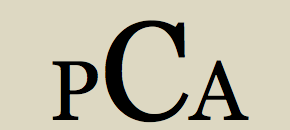– Remarks Prepared for 8/21/17 City Council Meeting
Thank you to Jennifer Smith Cavenaugh and Teddy Gray King for encouraging speakers at the August 21, 2017 Piedmont City Council Open Forum.
No one should have to show up at a City Council meeting to make sure their council members condemn the violence and hate that resulted in the deaths of two Virginia State troopers and a peaceful protestor as the direct result of racism, bigotry and hate. But there is a reason we are all here tonight. We all showed up because it is important to us to show moral leadership and speak unequivocally against the bigotry and hate that was on display in Virginia.
After I had commented that I found President Trump’s failure to denounce Nazis especially disturbing in light of the fact he has Jewish grandchildren, Mayor Wieler defended President Trump’s comments as adequate, arguing that the antifa protesters “picked a fight.”
An interesting point of view, despite the fact that Republican leaders, Business Leaders, Clergy and others expressed outrage at President Trump’s comparison of the behaviors of two opposing protest groups as equally wrong; Despite the fact that the messages of hate and bigotry advocated by White Supremacists, the KKK and the Alt right resulted in murder.
I am personally concerned that Mayor Wieler appears to judge the behavior of people who are actively trying to legitimize racial discrimination, people who carry signs and chant anti-Semitic, racist, and homophobic slurs with the behavior of counter protesters. There cannot be 2 sides. We can condemn those who champion violence and racial discrimination without conflating those who protest AGAINST discrimination.
Most importantly, I am here because Piedmont children are listening. I have encouraged Mayor Wieler to make a personal connection with the families he represents. Our children are seeing messages of hate across media screens.
There are children in our town who have recently been the victims of anti-Semitic jabs; there are children in our town who have been victims of racial bias and there is a current lawsuit against the city by a former police officer calling out incidents of racism.
Justifying the President’s pathetic response to the tragedy in Charlottesville has local repercussions on the well being of Piedmont families.
So when I asked Mayor Wieler if he would join City Councils across the United States sharing a moment of silence in observation of the tragedy in Charlottesville, he responded:
“As a moment of silence, I will stop engaging with you.”
He then referred to me as a “Lurid Partisan” and an “Irish Catholic claiming to be Miss Sensitivity.”
Which brings me to the second reason I am here tonight…
It is unacceptable for a nonpartisan mayor to express hatred for liberals. Mayor Wieler, you have a public FaceBook page and you post on it almost daily…often several posts a day. AND, you regularly represent Piedmont at Bay Area Conferences of local small town leaders. Allow me to suggest, YOUR IDEOLOGY DOES NOT REPRESENT PIEDMONT:
A small sampling of Mayor Wieler’s thoughts:
“The left burns buildings and deprives people of free speech and physically attacks conservatives. There’s a b***h named Falatco who led a gang that attacked a Trump rally in Berkeley.”
“Black Lives Matter encourages cop killing.”
“The Left is dangerous and un-American.”
“Transgenders are mentally ill.”
‘The left is Intellectually bankrupt.”
“Democrats are the plantation slave masters of today.” (article)
“Fight the leftie barbarians.”
“The tinfoil hat crowd of the left should be pitied because insanity is a terrible fate.”
“Some people hate Trump, but more people hate liberals.”
“The loonies of the resistance are worth a laugh, but not much more than that.”
Finally, I am here tonight to tell you, Mr. Mayor, when you threaten to use your friendship with the Editor of the hometown newspaper to denigrate those who would disagree with you, you have crossed a line.
You crossed a line when you threatened me and threaten people I care about with an “investigative story that I would not like.” You abuse your power Mr. Mayor.
Piedmonters should hope for leaders who are open-minded, even tempered and emotionally stable.
Beyond that, Piedmonters should feel safe in knowing their small town mayor isn’t going to confer with the small town newspaper editor over lunch to invent ways to take down a member of the community with whom they disagree.
That is an abuse of power.
I would fully support this City Council in a decision to elevate Vice Mayor McBain to Mayor while allowing Jeff Wieler to quietly finish his term on the Council through November 2018.
by Conna McCarthy, Piedmont Resident


 Dr. Raphael is an adjunct fellow at the Public Policy Institute of California and professor of public policy at UC, Berkeley. His research focuses on the economics of low-wage labor markets, housing, and the economics of crime and corrections.
Dr. Raphael is an adjunct fellow at the Public Policy Institute of California and professor of public policy at UC, Berkeley. His research focuses on the economics of low-wage labor markets, housing, and the economics of crime and corrections.